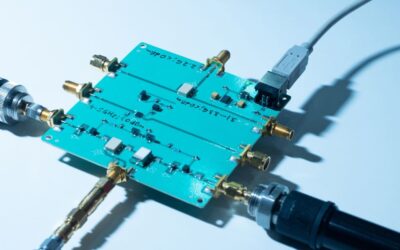Enhancing Satellite Communication through RF Engineering

The world of satellite communication plays an essential role in today’s global connectivity, enabling everything from television broadcasts to internet access in remote locations. At the heart of this technology is radio frequency (RF) engineering, a field that shapes how satellites transmit and receive signals over vast distances. Let’s break down the importance of RF engineering in satellite communication and explore its various components, offering insights into how this discipline ensures the reliability and efficiency of the systems we depend on.
Understanding RF Engineering in Satellite Communication
Radio Frequency (RF) engineering is the backbone of satellite communication. It involves the design, optimization, and management of the electromagnetic waves that carry data between satellites and ground stations. RF engineers focus on numerous factors, such as frequency allocation, signal modulation, antenna design, and power management, all of which contribute to the overall performance of satellite communication systems.
At its core, RF engineering deals with the transmission of electromagnetic waves at different frequencies. These waves are responsible for carrying information across long distances, including from Earth to space and back. The process begins with the modulation of a signal onto a carrier wave, which is then transmitted through an antenna. On the receiving end, another antenna captures the signal, which is then demodulated to retrieve the original information. This seemingly simple process is fraught with challenges, including signal attenuation, interference, and noise, all of which must be meticulously managed by RF engineers.
Frequency Allocation and Spectrum Management
One of the most critical aspects of RF engineering in satellite communication is frequency allocation and spectrum management. The radio frequency spectrum is a limited resource, with various frequency bands designated for different types of communication services. Satellite communication typically uses specific frequency bands, such as C-band, Ku-band, and Ka-band, each with its advantages and limitations.
C-band, for example, is known for its resistance to rain fade, making it ideal for regions with heavy rainfall. Ku-band offers higher bandwidth and is commonly used for television broadcasts and data transmission. Ka-band, with even higher frequencies, provides greater capacity and is increasingly being used for broadband internet services. RF engineers must carefully select the appropriate frequency band based on the specific needs of the communication system, balancing factors like bandwidth availability, interference potential, and regulatory constraints.
Spectrum management is another critical element, ensuring that different communication systems do not interfere with each other. This involves coordinating the use of frequencies among various users, including satellites, terrestrial networks, and military systems. Effective spectrum management requires a deep understanding of the electromagnetic environment and the ability to predict and mitigate potential interference sources.
Signal Modulation and Power Management
Signal modulation is a key component of RF engineering, determining how data is encoded onto the carrier wave. Different modulation schemes offer varying levels of efficiency, robustness, and complexity. For satellite communication, modulation schemes must be chosen based on factors such as the available bandwidth, the quality of the communication channel, and the power constraints of the satellite.
Common modulation techniques in satellite communication include Quadrature Amplitude Modulation (QAM) and Phase Shift Keying (PSK). These techniques enable efficient use of the available spectrum, allowing more data to be transmitted within a given bandwidth. However, they also require precise power management, as higher modulation levels often demand more power to maintain signal integrity over long distances.
Power management is a crucial aspect of satellite communication, particularly for satellites operating in geostationary orbit, where power is limited by the onboard solar panels and batteries. RF engineers must optimize the transmission power to ensure that the signal reaches the ground station with sufficient strength, while also minimizing power consumption to extend the satellite’s operational life.
Antenna Design and Beamforming
Antenna design is another vital area of RF engineering in satellite communication. The antenna is responsible for transmitting and receiving electromagnetic waves, and its design directly impacts the efficiency and coverage of the communication system. RF engineers must consider factors such as antenna gain, beamwidth, and polarization when designing antennas for satellite communication.
One of the advanced techniques used in antenna design is beamforming, which involves shaping the radiation pattern of the antenna to focus the signal in a specific direction. This allows for more efficient use of power and reduces interference with other communication systems. Beamforming is particularly important in satellite communication, where the antenna must often cover large areas on Earth while avoiding interference with neighboring satellites.
RF engineering is the unsung hero of satellite communication, ensuring that the signals carrying our data travel smoothly across the vast expanse of space. By mastering the intricacies of frequency allocation, signal modulation, power management, and antenna design, RF engineers play a crucial role in maintaining the reliability and efficiency of satellite communication systems. As these technologies continue to evolve, the expertise of RF engineers will remain indispensable in meeting the growing demand for global connectivity.
At Smith & Fisher, the latest software and measurement tools are employed, combined with forensic engineering techniques, to provide coverage or interference solutions tailored to your station’s needs. Contact us today!
Recent Posts
- The Importance of RF Studies in Modern Broadcasting: What You Need to Know
- How Single Frequency Network is Shaping the Next Generation of Smart Cities
- How AI and Machine Learning Are Impacting RF Design
- The Importance of Regular RF Audits for FM Station Success
- Why Radio Frequency Radiation Testing Matters in Our Tech-Savvy World





